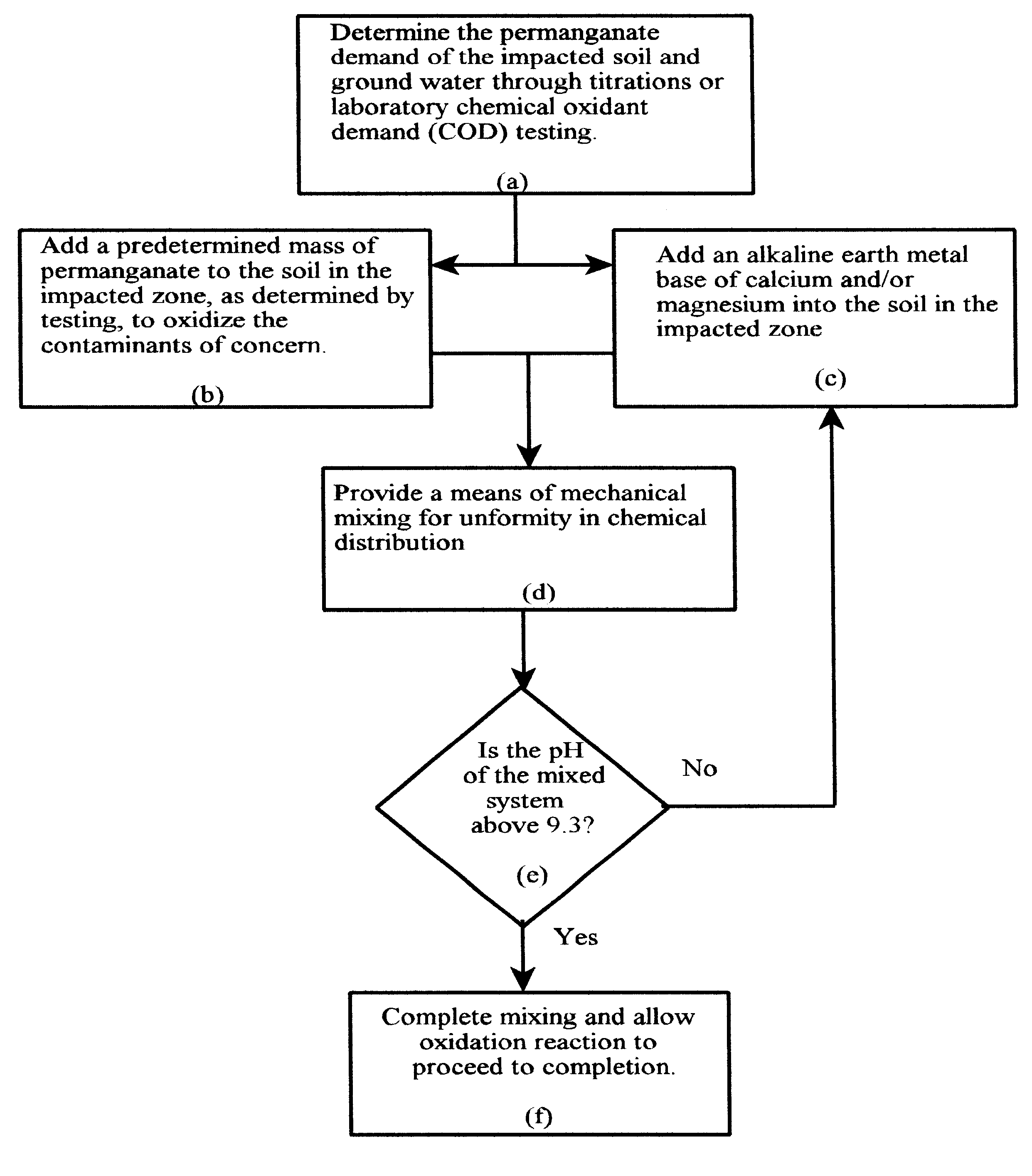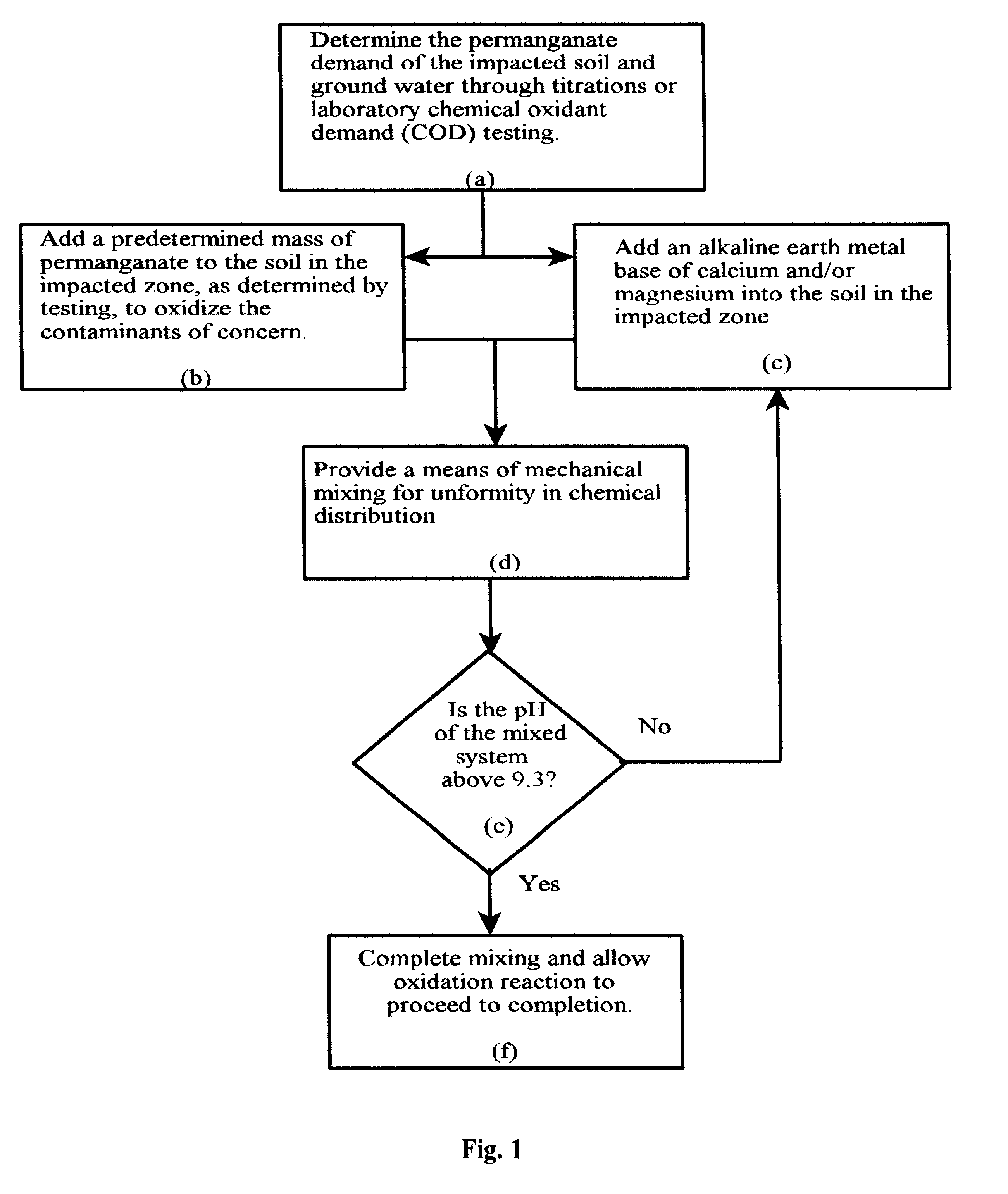Soil remediation by permanganate oxidation
a technology of permanganate and soil, applied in the direction of contaminated soil reclamation, etc., can solve the problems of unstable intermediate product, limited use of chemical oxidation for remediation applications, and adverse effects of ether (mtbe) on ground water supply
- Summary
- Abstract
- Description
- Claims
- Application Information
AI Technical Summary
Problems solved by technology
Method used
Image
Examples
Embodiment Construction
The present invention presents a method to perform in-situ or ex-situ remediation of contaminants in soil and / or ground water using the permanganate ion and an alkaline earth metal base. The permanganate ion and the alkaline earth metal base are distributed into the soil by a means of mechanical mixing to allow for the permanganate to destroy contaminants in the soil and / or groundwater by chemical oxidation. The disclosed method produces a stable, post-treatment, manganese dioxide precipitate that does not adversely effect the ground water with high dissolved manganese concentrations. The preferred permanganate salt is potassium permanganate due to cost and availability, but sodium permanganate or magnesium permanganate may also be used. The preferred alkaline earth metal bases are calcium oxide, calcium hydroxide, magnesium oxide and magnesium hydroxide. Dolomite quick lime, either hydrated or unhydrated, may be used to supply an inexpensive source of the desired calcium and / or mag...
PUM
 Login to View More
Login to View More Abstract
Description
Claims
Application Information
 Login to View More
Login to View More - R&D
- Intellectual Property
- Life Sciences
- Materials
- Tech Scout
- Unparalleled Data Quality
- Higher Quality Content
- 60% Fewer Hallucinations
Browse by: Latest US Patents, China's latest patents, Technical Efficacy Thesaurus, Application Domain, Technology Topic, Popular Technical Reports.
© 2025 PatSnap. All rights reserved.Legal|Privacy policy|Modern Slavery Act Transparency Statement|Sitemap|About US| Contact US: help@patsnap.com


